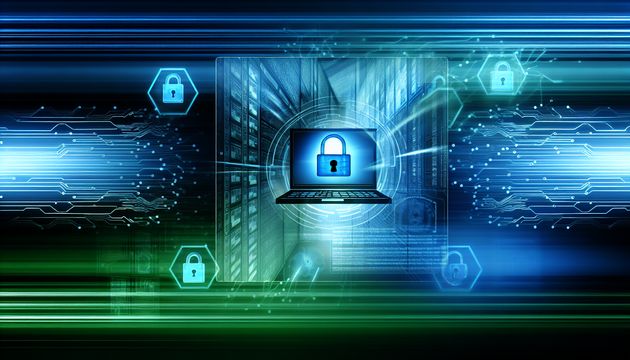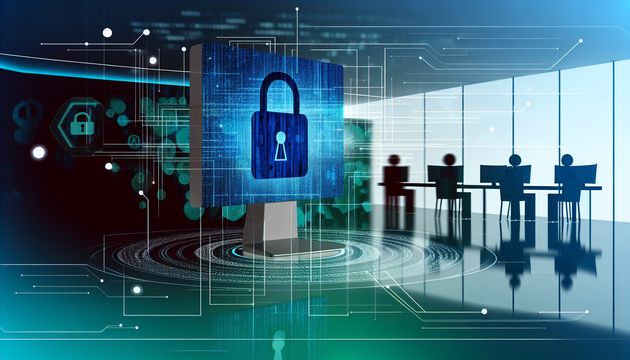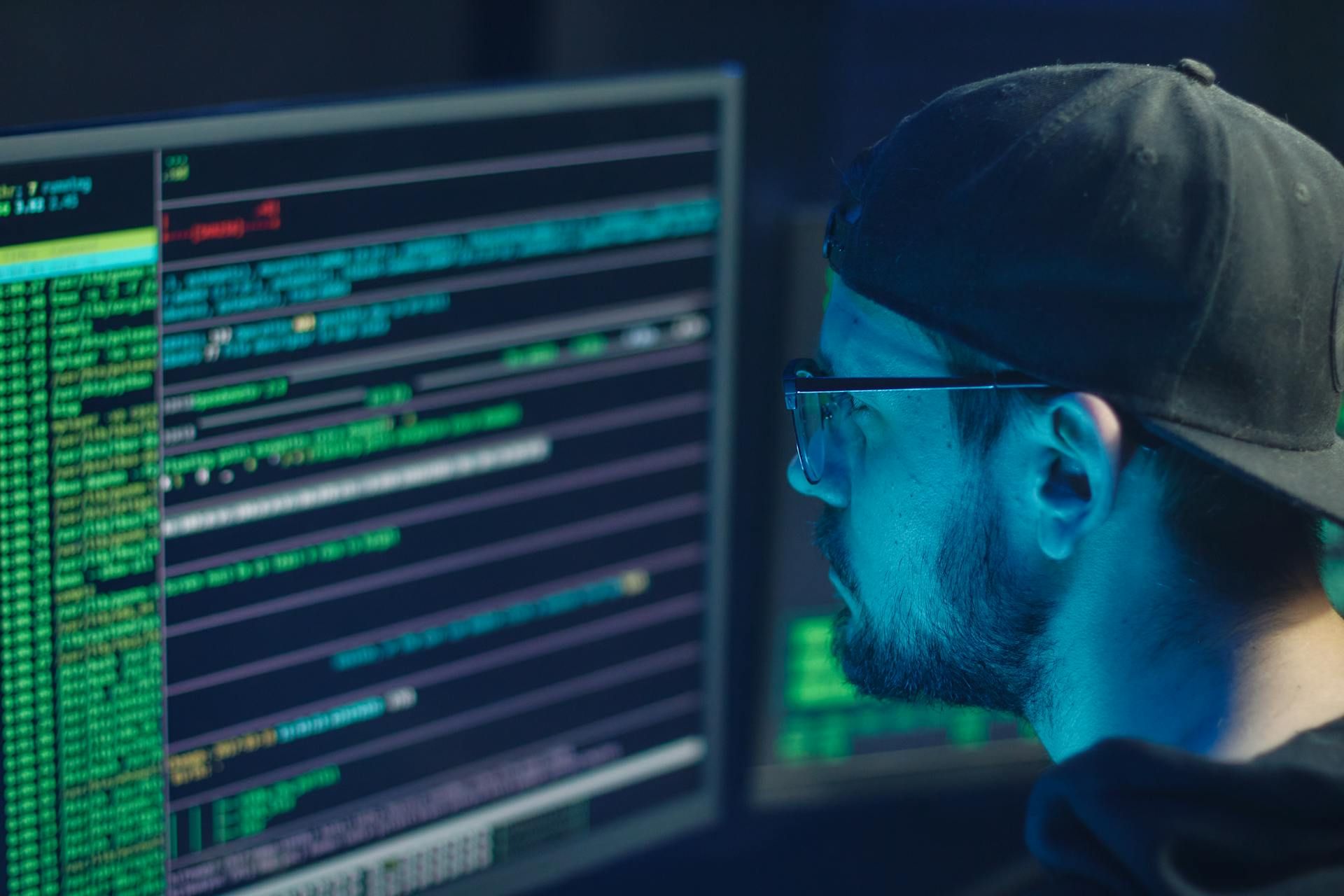
Spring Cleaning Your Cybersecurity Setup: What to Do in 2025
In 2025, the landscape of cybersecurity is more complex and challenging than ever before. As digital threats evolve, so too must the strategies and tools we use to combat them. The integration of artificial intelligence (AI) into cybersecurity systems has become a pivotal development, enabling real-time threat detection and response with unprecedented accuracy (Infosecurity Magazine). However, this technological advancement is a double-edged sword, as cybercriminals also leverage AI to enhance their attack strategies, such as sophisticated phishing campaigns and automated malware deployment (ActZero).
Moreover, the rise of Ransomware-as-a-Service (RaaS) has lowered the barrier to entry for cybercriminals, making ransomware attacks more prevalent and sophisticated. This trend underscores the critical need for robust cybersecurity measures, particularly as organizations increasingly rely on cloud environments, which have seen a significant uptick in intrusions (SentinelOne).
In this context, spring cleaning your cybersecurity setup is not just a seasonal task but a necessary strategy to safeguard your digital assets. This involves a comprehensive review and enhancement of access controls, endpoint security, software updates, email security, and incident response plans. By adopting these measures, organizations can better protect themselves against the evolving threats of 2025 and beyond.
Key Cybersecurity Trends in 2025
AI-Driven Threat Detection and Response
The integration of artificial intelligence (AI) into cybersecurity systems has become a cornerstone of modern threat detection and response strategies in 2025. Unlike traditional methods, AI-driven systems can analyze vast datasets in real-time, identifying anomalies and potential threats with greater accuracy. For instance, AI-powered tools like CrowdStrike’s Falcon platform have been enhanced with generative AI capabilities, such as Charlotte AI, to improve endpoint protection and automate responses (Infosecurity Magazine).
AI is also being used by attackers to create sophisticated phishing campaigns and automate malware deployment. Businesses must adopt AI-powered countermeasures to mitigate these risks effectively. For example, generative AI has enabled attackers to craft highly personalized social engineering schemes, making traditional detection methods less effective. Organizations are now implementing AI-driven Security Operations Centers (SOCs) to proactively monitor and respond to these threats (ActZero).
The Rise of Ransomware-as-a-Service (RaaS)
Ransomware attacks have evolved significantly, with Ransomware-as-a-Service (RaaS) becoming a prevalent model in 2025. This model allows less technically skilled cybercriminals to purchase ransomware kits and launch attacks with minimal effort. The sophistication of these attacks has increased, with tactics like double extortion—where attackers encrypt data and threaten to leak sensitive information if the ransom is not paid—becoming more common (SentinelOne).
Organizations are particularly vulnerable to these attacks due to the growing reliance on cloud environments. A 75% year-over-year increase in cloud intrusions was reported in 2024, highlighting the need for enhanced cloud security measures (ActZero). To combat RaaS, businesses are investing in advanced backup strategies and incident response plans to ensure quick recovery and minimize downtime.
Regulatory Challenges and Compliance
The regulatory landscape for cybersecurity has become increasingly complex in 2025, with new laws and guidelines being introduced to address emerging threats. Governments worldwide are focusing on AI regulation to ensure ethical use and prevent misuse in cyberattacks. For example, regulations now mandate transparency in AI-driven systems and require organizations to implement robust data protection measures (Trustwave).
Compliance with these regulations is critical for businesses, as non-compliance can result in hefty fines and reputational damage. Organizations are adopting compliance management tools to streamline the process and ensure adherence to global standards. This shift towards regulatory compliance also includes the implementation of AI governance frameworks to monitor and control the use of AI in cybersecurity (Infosecurity Magazine).
Critical Infrastructure as a Target
Critical infrastructure sectors, such as healthcare, energy, and transportation, have become prime targets for cyberattacks in 2025. The increased digitalization of these sectors has exposed vulnerabilities that attackers are exploiting. For instance, ransomware attacks on healthcare providers have disrupted patient care, while attacks on energy grids have caused widespread outages (Trustwave).
To address these challenges, governments and organizations are investing in robust cybersecurity frameworks tailored to critical infrastructure. This includes the use of AI-driven monitoring systems to detect and mitigate threats in real-time. Additionally, public-private partnerships are being formed to share threat intelligence and develop coordinated response strategies (Crisis24).
Supply Chain Security
Supply chain attacks have surged in 2025, with attackers targeting third-party vendors to gain access to larger organizations. These attacks exploit the interconnected nature of modern supply chains, making them a significant cybersecurity threat. For example, attackers have used compromised software updates to infiltrate enterprise networks, leading to data breaches and operational disruptions (Trustwave).
To mitigate these risks, organizations are implementing stringent vetting processes for third-party vendors and adopting zero-trust security models. These models assume that no entity, internal or external, can be trusted by default, requiring continuous verification of all users and devices. Additionally, businesses are leveraging blockchain technology to enhance transparency and traceability within their supply chains (WatchGuard).
By addressing these key cybersecurity trends, organizations can strengthen their defenses and ensure a secure digital environment in 2025.
Spring Cleaning Your Cybersecurity Setup: A Step-by-Step Guide
1. Strengthening Access Controls and Permissions
Access controls are the backbone of a secure cybersecurity setup. Regularly reviewing and updating these controls ensures that only authorised personnel have access to sensitive data and systems. This step is critical as insider threats and privilege misuse remain significant risks.
a. Role-Based Access Control (RBAC)
Implementing or refining Role-Based Access Control (RBAC) ensures that users only have access to the information necessary for their roles. RBAC is a method of restricting system access to authorized users based on their role within an organization. For example, a 2024 study by IBM found that privilege misuse accounted for 19% of data breaches globally. By limiting access, organisations can significantly reduce this risk. Consider using tools like Microsoft Azure AD or Okta to enforce RBAC policies effectively.
b. Regular Permission Audits
Conduct quarterly audits to identify and revoke unnecessary permissions. Dormant accounts or excessive privileges can be exploited by attackers. For instance, Verizon’s 2024 Data Breach Investigations Report highlighted that 17% of breaches involved compromised accounts with excessive permissions. Automating this process with tools like SolarWinds Access Rights Manager can save time and improve accuracy.
c. Implementing Just-In-Time (JIT) Access
Adopt Just-In-Time (JIT) access protocols to grant temporary permissions for specific tasks. JIT access minimizes the attack surface by ensuring that elevated privileges are not continuously available. Solutions like BeyondTrust Privileged Access Management can facilitate JIT access effectively.
2. Enhancing Endpoint Security Measures
Endpoints, such as laptops, smartphones, and IoT devices, are common entry points for cyberattacks. A robust endpoint security strategy is essential to prevent breaches.
a. Endpoint Detection and Response (EDR) Solutions
Deploy EDR solutions to monitor and respond to threats in real time. EDR solutions provide continuous monitoring and response to advanced threats. Tools like CrowdStrike Falcon and SentinelOne offer advanced threat detection capabilities, including behavioural analysis and automated responses. According to a 2024 Gartner report, organisations using EDR solutions experienced a 30% reduction in endpoint-related incidents.
b. Securing IoT Devices
IoT devices often lack robust security features, making them vulnerable to attacks. Ensure that all IoT devices are updated with the latest firmware and are connected to a segmented network. For instance, the 2024 Ponemon Institute study revealed that IoT-related breaches increased by 21% compared to 2023, underlining the importance of securing these devices.
c. Enforcing Device Encryption
Encrypting data on all endpoints ensures that sensitive information remains secure even if a device is lost or stolen. Solutions like BitLocker (Windows) and FileVault (macOS) provide built-in encryption capabilities. According to Cybersecurity Ventures, encryption reduced the impact of data breaches by 40% in 2024.
3. Updating and Patching Software Regularly
Software vulnerabilities are a primary target for cybercriminals. Keeping all software up to date is a fundamental step in maintaining a secure cybersecurity setup.
a. Automating Patch Management
Use automated patch management tools like ManageEngine Patch Manager or Ivanti to ensure timely updates. A 2024 report by the National Vulnerability Database (NVD) found that 60% of exploited vulnerabilities were over a year old, emphasising the need for prompt patching.
b. Prioritising Critical Updates
Not all updates are equally urgent. Focus on applying patches for vulnerabilities that are actively exploited or have a high severity score. Tools like Qualys or Nessus can help prioritise these updates based on risk assessments.
c. Third-Party Software Monitoring
Third-party applications often introduce vulnerabilities. Regularly review and update these applications to minimise risks. For example, the 2024 Verizon Data Breach Investigations Report noted that third-party software was involved in 22% of breaches.
4. Implementing Advanced Email Security Protocols
Email remains one of the most common vectors for cyberattacks, including phishing and malware distribution. Strengthening email security is crucial for protecting organisational data.
a. Enforcing DMARC, SPF, and DKIM
Deploy Domain-based Message Authentication, Reporting, and Conformance (DMARC), Sender Policy Framework (SPF), and DomainKeys Identified Mail (DKIM) to authenticate email senders and prevent spoofing. DMARC, SPF, and DKIM are protocols that help verify the authenticity of email senders and protect against email spoofing. According to a 2024 report by Proofpoint, organisations with these protocols experienced a 50% reduction in phishing attacks.
b. AI-Powered Email Filtering
Adopt AI-powered email filtering solutions like Mimecast or Barracuda to detect and block sophisticated phishing attempts. These tools use machine learning to identify suspicious patterns and adapt to emerging threats.
c. Employee Training on Email Security
Regularly train employees to recognise phishing attempts and report suspicious emails. A 2024 survey by KnowBe4 found that organisations with ongoing training programs reduced phishing-related incidents by 37%.
5. Strengthening Incident Response Plans
An effective incident response plan ensures that organisations can quickly and efficiently mitigate the impact of cyberattacks.
a. Conducting Regular Tabletop Exercises
Simulate cyberattacks through tabletop exercises to test and refine incident response plans. These exercises help identify gaps and improve coordination among teams. According to a 2024 study by the SANS Institute, organisations that conducted regular tabletop exercises reduced recovery times by 25%.
b. Establishing a Cybersecurity Incident Response Team (CSIRT)
Form a dedicated Cybersecurity Incident Response Team (CSIRT) to handle incidents. This team should include representatives from IT, legal, and communications departments. Tools like Splunk Phantom or IBM Resilient can assist in coordinating response efforts.
c. Post-Incident Analysis
After resolving an incident, conduct a thorough analysis to identify root causes and implement preventive measures. This step is critical for continuous improvement and reducing the likelihood of recurrence. For example, the 2024 Ponemon Institute study highlighted that organisations conducting post-incident analyses reduced future incidents by 18%.
This report provides actionable steps to enhance cybersecurity in 2025, focusing on access controls, endpoint security, software updates, email security, and incident response. By implementing these measures, organisations can significantly improve their security posture and protect against evolving threats.
Conclusion
As we navigate the cybersecurity challenges of 2025, it is clear that a proactive and comprehensive approach is essential. The integration of AI in both defensive and offensive cyber strategies highlights the need for organizations to stay ahead of the curve by adopting AI-driven security solutions (Trustwave). Additionally, the rise of Ransomware-as-a-Service (RaaS) and the increasing complexity of regulatory compliance demand that businesses implement advanced security measures and maintain strict adherence to evolving standards.
By focusing on strengthening access controls, enhancing endpoint security, ensuring timely software updates, implementing advanced email security protocols, and refining incident response plans, organizations can significantly bolster their cybersecurity posture. These steps not only mitigate the risk of breaches but also ensure a resilient response to any incidents that do occur. As the digital landscape continues to evolve, maintaining a vigilant and adaptive cybersecurity strategy will be crucial for safeguarding organizational assets and maintaining trust in the digital age.
References
- Infosecurity Magazine, 2025, https://www.infosecurity-magazine.com/news-features/cyber-ai-trends-review-preparing/
- ActZero, 2025, https://actzero.ai/resources/blog/2025-cybersecurity-predictions-ransomware-shifts-to-ai-socs
- SentinelOne, 2025, https://www.sentinelone.com/cybersecurity-101/cybersecurity/types-of-ransomware/
- Trustwave, 2025, https://www.trustwave.com/en-us/resources/blogs/trustwave-blog/trustwaves-2025-cybersecurity-predictions-ai-powered-attacks-critical-infrastructure-risks-and-regulatory-challenges/



